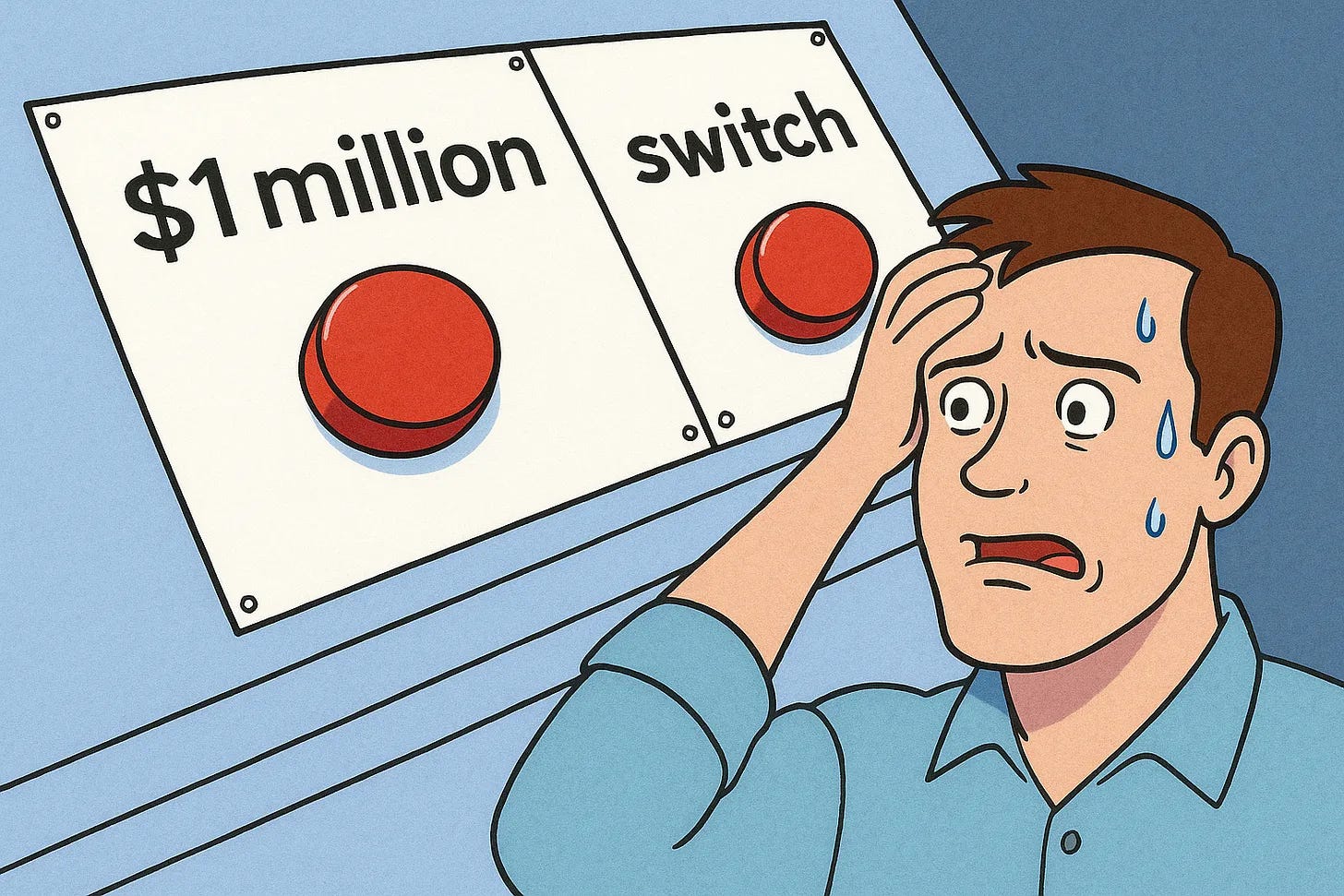Solution To Shades of Monty Hall
Like the Monty Hall problem, there is a strategy to determine whether we should switch
To recap the puzzle:
A man walks into a casino and spots an interesting new game. He is presented with two buttons, either of which he can push. One of the buttons will win him a certain amount of money and the other will win him twice the amount, although he doesn’t know what the amount is. So he pushes one of the buttons at random and is surprised and very pleased to learn he just won $1 million. Suddenly, the machine presents him with two new buttons. He can push one to keep his original choice, keeping the $1 million. Or he can switch his choice to the button he didn’t push. What would you do and why?
When the man is shown how much he won when he pushed the first button randomly, that revealed some information: either the two rewards are $500K and $1 mil or they are $1 mil and $2 mil, but we don’t know which. Given that information, we can devise a strategy to determine whether we should switch our choice.
Suppose we draw a random number from anywhere from the real line using some probability distribution and we take that random number as a proxy for the amount behind the other button. For example, if we randomly selected $750K we would not switch, since $1 mil is bigger. But if we randomly selected $1.5 mil, we would switch, since $1.5 mil is larger than $1 mil. If we happen to select the random number and it falls in the interval of the true rewards, we will guess whether to switch correctly with certainty. And if we draw that number outside the interval, then we will guess correctly half the time.
Let’s formalize that. Suppose we have a pair of prizes (X, 2X) and let S be the event that we switch correctly using our strategy. We choose our random number from Z that comes from some distribution. Then,
But,
So,
which is greater than 50%.
We need to select our underlying probability distribution cleverly then. Suppose we choose a normal distribution with mean $1 mil and standard deviation $500K. That choice should guarantee good probability mass around the intervals (500K,1 mil) and (1 mil, 2 mil).
If it turns out that we are in the interval (500K, 1 mil), then the probability that Z is in (500K, 1 mil) is about 0.34 and the probability of choosing correctly is 1/2 + 1/2(0.34) = 67%. However, if the interval happened to be (1 mil, 2 mil), then the probability that Z is in (1 mil, 2 mil) is 0.48 and the probability of choosing correctly is 1/2 + 1/2(0.48)= 74%.


